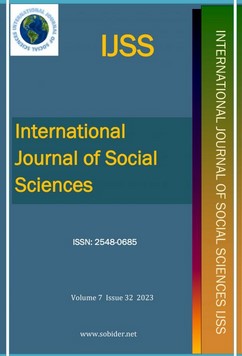Tarihsel Tasarım Sürecinde Mevcut Eşgüdüm ve Uygulama Çerçevesinde Eğitim Yöntem ve Tekniklerinde Yeni Teknolojilerin Kullanımının İncelenmesi
Examination of the Use of New Technologies in Educational Methods and Techniques within the Framework of Existing Coordination and Application in the Historical Design Process
Author(s): Osman Özdemir, Eyüp ÖZGÜN, Mehmet Barış İL, Songül ELHAKANSubject(s): State/Government and Education, Methodology and research technology, Pedagogy
Published by: SD Yayınevi
Keywords: Training Methods and Techniques; New Technology; Design Process; Coordination and Implementation;
Summary/Abstract: One of the most important topics that stand out in the process of Turkey's candidacy for the European Union is undoubtedly education. Undoubtedly, one of the attitudes that are desired to be imparted to students in primary, secondary and higher education institutions today is to learn the use of new technologies in education. Electronics and communication technology The only way for students to stay up-to-date after graduating in their rapidly developing fields is to ensure lifelong learning by maintaining the use of new technologies in education. In addition, they are expected to acquire this attitude that they developed during their student life to their own students in the teaching profession. Developing and strengthening lifelong learning attitude by maintaining the use of new technologies in education among students includes differences according to other attitudes, skills and habits that students want to acquire. The development of a lifelong learning attitude by maintaining the use of new technologies in education involves students gaining new skills such as information collection, as well as developing some special attitudes and desires related to learning. Another issue related to lifelong learning through the method of maintaining the use of new technologies in education is self-learning. Self-learners generally have certain characteristics, attitudes and skills. These attitudes include that learning is a personal responsibility, an approach such as challenging problems, and a willingness to learn. Lifelong learning characteristics include being motivated, independent, self-disciplined and self-confident by the method of maintaining the use of new technologies in education. His skills include basic study skills and time management. Presenting activities such as design, where the solution is not obvious, instead of closed-ended problems to students in education and training processes, can help them develop the skills and attitudes necessary for lifelong learning, as it will require the integration of the learned material, the discovery of knowledge through experiments and research.
Journal: Uluslararası Sosyal Bilimler Dergisi
- Issue Year: 7/2023
- Issue No: 32
- Page Range: 53-67
- Page Count: 15
- Language: Turkish

